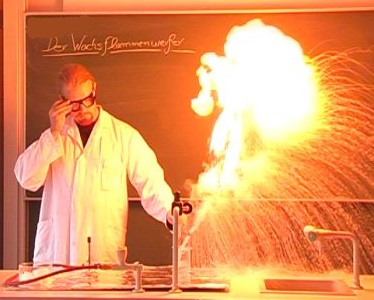|
In high school chemistry class we watched a movie in which nothing less than a magical transformation took place. A scientist mixed two parts hydrogen gas and one part oxygen gas in a clear, sealed container, then sent an electrical charge into it. It created a spark, which provided the energy to force the two gases to join together in an explosive chemical union. The result was that they became a composition of matter which we recognize to be water. Composition of matter is a term within the federal statute that determines patent eligibility, that of 35 USC § 101. It, along with the other terms we’ve been discussing, such as machine, and article of manufacture, is yet another consideration which must be addressed on the road to patentability. To get a handle on the meaning of composition of matter, we have to go back to the Supreme Court’s ruling in Diamond v. Chakrabarty, a landmark case introduced in last week’s blog. Here the court defined composition of matter as, “compositions of two or more substances and all composite articles, whether they be the results of chemical union, or of mechanical mixture, or whether they be gases, fluids, powders or solids.” The Court’s definition of composition of matter covers chemical compounds and composites. The Merriam-Webster Dictionary, defines a composite as something “made up of distinct parts.” Composite articles include most of the man-made products modern society is so familiar with and can’t seem to live without. Examples include plywood, concrete, and fiberglass. They’re typically made up of a myriad of components, some of which are raw materials, some man-made chemical compounds. Chemical compounds are commonly made by uniting two or more chemical elements, the basic building blocks of matter that you might be familiar with from the Periodic Table always on display in a high school chemistry classroom. When a chemical union takes place the elements are forced, by way of mixing and heating, to bind together at the atomic level. If you’re not quite sure what “atomic” means, visit this site for a brief refresher: Atom Definition Chemical compounds include man-made things like fuels, plastics, fertilizers, food preservatives, pesticides, and cleaning solutions. They’re all things that require human intervention to produce. You may not realize it, but metal alloys are also essentially chemical compounds. These alloys are formed when two or more metals, or a metal and nonmetal, are fused together. Steel, for example, is an alloy composed of multiple elements, including iron, nickel, and carbon, which mix together during heating and become molten. During cooling the elements firmly unite and form atomic bonds to produce a new solid, one not available directly from nature. Next time we’ll wrap up our discussion on 35 USC § 101by discussing the meaning of process with regard to patent eligibility. ___________________________________________ |
Posts Tagged ‘metal alloy’
Determining Patent Eligibility – Part 6, Composition of Matter
Sunday, May 12th, 2013Tags: 35 USC § 101, 35 USC Section 101, article of manufacture, chemical compound, composite, Diamond v. Chakrabarty, engineering expert witness, forensic engineer, machine, metal alloy, patent eligibility, patent infringement, process
Posted in Engineering and Science, Expert Witness, Forensic Engineering, Innovation and Intellectual Property, Product Liability, Professional Malpractice | Comments Off on Determining Patent Eligibility – Part 6, Composition of Matter




